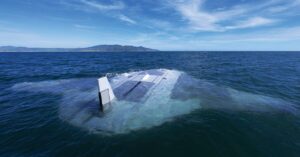
Wooden Steamship That Disappeared In 1909 Finally Discovered In Lake Superior
May 2, 2024
30 Sailors And Mariners Injured During U.S. Navy Training Exercise Off Florida
May 3, 2024

The unmanned underwater vehicle, Manta Ray, developed by performer Northrop Grumman, executed full-scale in-water testing off the Southern California coast in February and March of this year.
Testing demonstrated at-sea hydrodynamic performance, which included submerged activities using the vehicle’s propulsion and steering modes: buoyancy, control surfaces, and propellers.
The fruitful and full-scale Manta Ray testing helped validate the vehicle’s readiness to move toward operations after being assembled rapidly in the field from modular subsections, mentioned Dr. Kyle Woerner, the DARPA program manager associated with Manta Ray.

The combination of cross-country modular transportation, in-field assembly, and the subsequent deployment indicates a first-of-kind capability for an XL UUV.
Northrop Grumman reportedly shipped the Manta Ray prototype, but in subsections, from the build site in Maryland to the test site in California.
The ease of shipping and assembly helps support rapid deployment worldwide without crowding pier space at any naval facility.

Woerner said that shipping the vehicle to its area of operation helps conserve energy, which the vehicle would expend during the transit.
Once deployed, the vehicle uses buoyancy-driven and efficient gliding to pass through the water.
The craft is carefully designed with many payload bays of considerable sizes and varieties to enable various naval mission sets.
Manta Ray aims to develop and demonstrate a new class of long-range, long-duration, payload-capable UUVs ready for operations in dynamic maritime spaces.
DARPA is now engaging with the US Navy on the next steps for transitioning and testing this technology.
PacMar Technologies, a second Manta Ray performer, is continuing to test its full-scale energy harvesting system this year.
Reference: Darpa
Manta Ray Prototype UUV Completes Full-Scale Underwater Testing In Southern California appeared first on Marine Insight – The Maritime Industry Guide
Source: Maritime Shipping News


